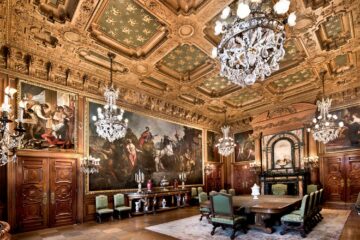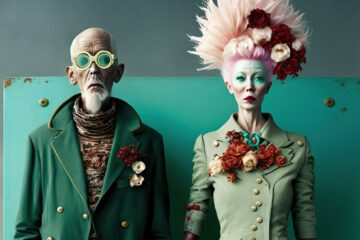Ai Weiwei An Artist With Heart
Living life across the globe has given Ai Weiwei an original perspective on political and social issues. His new exhibition — Ai Weiwei: Bare Life — is poised to share those insights with the world.
Born in Beijing in 1957, political dissident and artist Ai Weiwei lived the first 20 years of his life outside of the city. His first years were spent in a labour camp, while the rest saw the young boy exiled with his family in Xinjiang, China. It was not until 1976 that the artist returned to the city of his birth, following Mao Zedong’s death and the fall of the Cultural Revolution. Once back home, the artist began studying animation at the Beijing Film Academy, but he was ultimately led to apply his talents elsewhere.
The turmoil Weiwei experienced during the formative years of his life has had a direct and significant impact upon the art he creates. He has always explored themes like human rights on a global scale, as well as those more targeted at domestic issues within China itself. These were things he explored fully during his years spent in New York City throughout the 1980s and 1990s, where Weiwei first began to create his widely recognized conceptual artwork in addition to the more traditional photographs he took of police violence, political unrest and homeless people — all concerns that have remained central to his artistic practice.
Weiwei did not spend all of his time overseas, however. He returned to China in 1993 and immediately began to give back to the creative community. He helped establish a number of spaces held dear by many Chinese artists, including the China Art Archives & Warehouse, and the artist colony at Beijing East Village. He also contributed to the design of the National Stadium, known as the “Bird’s Nest,” specially built for the Beijing 2008 Summer Olympics, as well as FAKE Design, an architecture studio. It was in 2008, however, that Weiwei’s issues with China’s government really began in earnest.
After the 2008 Sichuan earthquake that killed thousands, including thousands of children, Weiwei emerged as a government critic after questioning how the earthquake was handled, and how the government could have minimized the death toll so significantly. He was arrested in 2011 and spent four years under constant surveillance. It wasn’t until 2015 that his passport was returned, and he was permitted to leave the country.
Today, Weiwei works and lives in Berlin. He has poured his heart and soul into the Ai Weiwei: Bare Life exhibition being presented by Mildred Lane Kemper Art Museum, located at Washington University in St. Louis. He hopes that the work, presented in two sections, Bare Life and Rupture, adequately convey his feelings and intent on current society — as well as past and future concerns — to the public.














































































